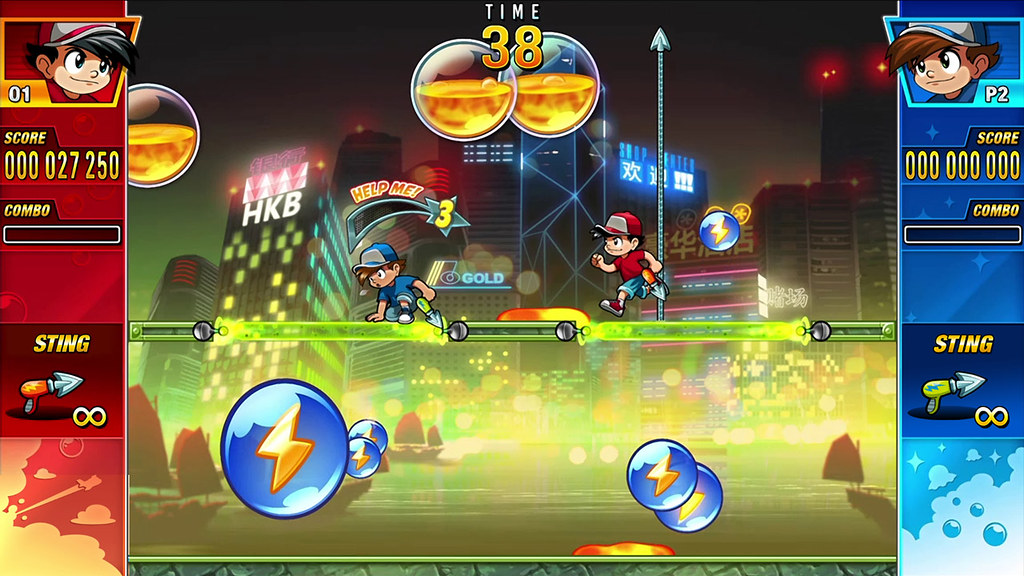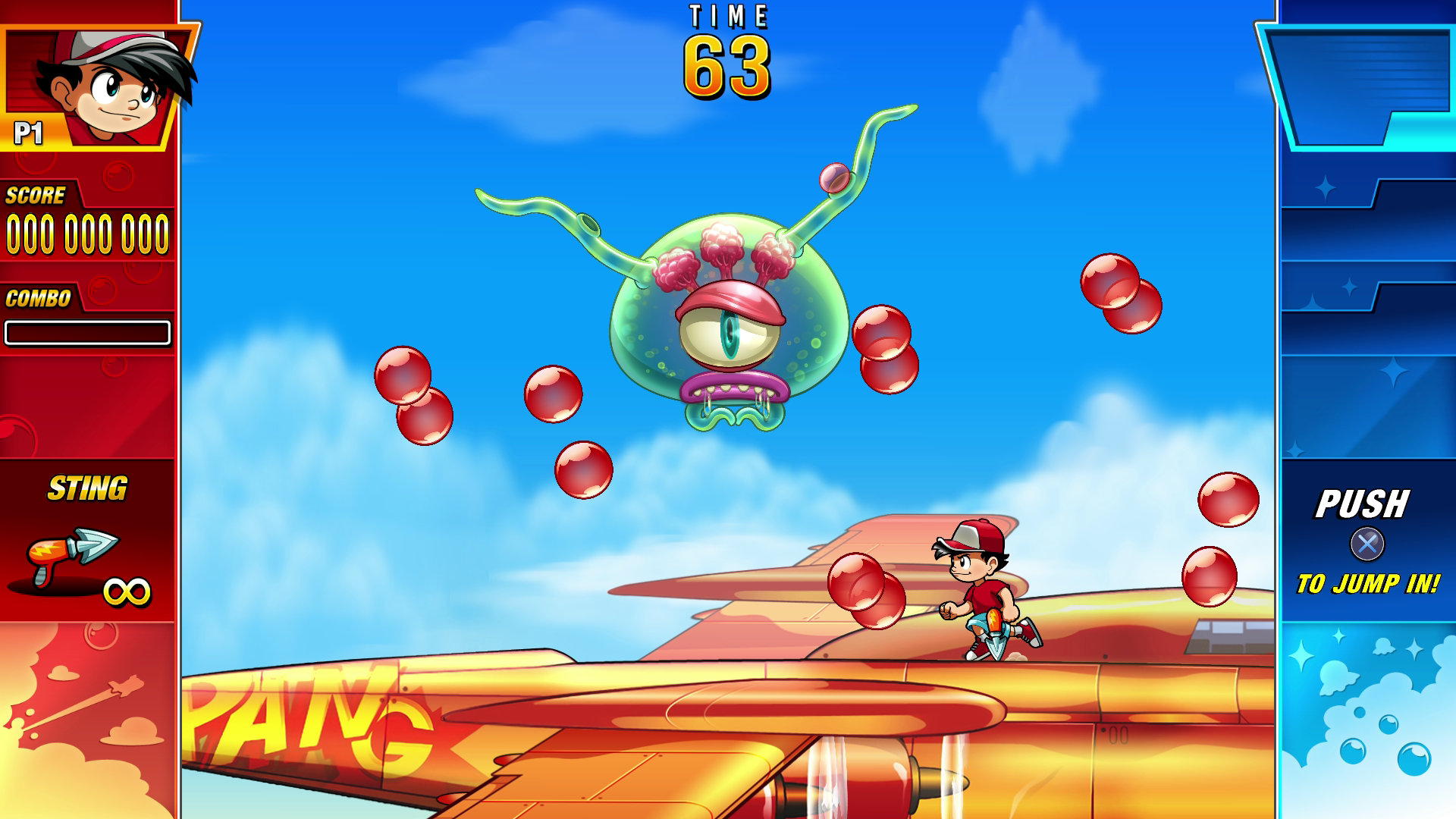Released on the arcade scene back in 1989, the original Pang was a great little shooter which made quick work of any silvers you had jiggling about inside your wallet. Like all the best arcade fare from that bygone era, Pang was horrendously easy to grasp; you had a little chap who could move from side-to-side and fire harpoons in the air with the goal of popping the various bubbles floating about the screen before moving onto the next level.
So far so simple then and that’s the thing really; Pang was always a simplistic affair, built for quick five or ten minute bursts of play rather than a consistent hammering spanning hours and hours. Some twenty-seven years later and DotEMU, together with Pix the Cat developer Pastagames, have brought the game kicking and screaming onto PS4 in the form of Pang Adventures and, well, it’s still pretty much the same game albeit with a few little bells and whistles unceremoniously jammed onto it.
From the off, one to two players can take on Tour Mode which supplants what would have been the standard arcade mode from the original, taking folks around different and gradually more difficult worldly locations while getting them stuck into some boss fights along the way. While the boss fights themselves, which are new to this version of the game, don’t really click when viewed in the overall scheme of things, it’s clear that Pang Adventures is always functioning at its best when it’s embracing simplicity rather than a bunch of extraneous stuff that.
Case in point is the core shooter mechanic that sits at the heart of Pang Adventures. As before, the simple concept remains unchanged; you move your cap-wearing chap from left to right, shooting harpoons at bubbles which then split into smaller bubbles while collecting items to boost your score and yeah, you get the idea. Though Pang Adventures is simple then, at least in premise, that shouldn’t suggest that it is without nuance.
In addition to the standard power-ups that were found in the arcade original, such as a temporary shield or the ability to freeze time for example, Pang Adventures also brings with it a whole bunch of new bubble-themed enemies to worry about too. Green bubbles for example, will drop a gloopy slime that slows your movement, while electrically charged bubbles will drop a lightning bolt when destroyed, forcing you to get out of the way lest you get electrocuted on route to a level restart.
As well as your arsenal of varying vertical bang-bang, there also other methods for splitting apart those pesky bubbles at your disposal. Crabs, for example, can also pop these bubbles, but they can also be killed by your spears too so you need to make sure that you don’t accidentally take them out during your furious quest to rid screen of anything that bounces. Elsewhere, the level design is often structured in such a way that a myriad of destructible platforms and ledges restrict the movement of the bubbles as well, forcing you to be tactically minded when you go about ‘freeing’ them, lest you become quickly overwhelmed. Luckily, in keeping with Pang Adventures accessible trappings, you can instantly restart a level at any given time with a quick push of the triangle button, so that’s nice.
Despite the additions made to the classic Pang formula however, it’s clear that Pang Adventures only really shines with bite-sized gaming sessions; go any longer than fifteen or twenty minute stretch and the old repetition starts to seep in. As such, Pang Adventures feels like the sort of game that you might impulsively play rather than set aside time in your busy social schedule for.
Beyond the Tour Mode, Pang Adventures also offers up two additional modes. Panic Mode is an exhaustive ‘ironman’ style affair where you plough through ninety-nine different levels of continuous battle, while Score Attack aims to channel Pang Adventures classic heritage by forcing you to complete the game with three lives and no continues. They represent nice distractions from the base game certainly, but neither of them feels properly substantial, instead coming across as mere afterthoughts in a package that could have included so much more than these two rather uninspiring extra modes.
Another kicker is how co-operative play is handled. While local co-op play should be commended and championed every second of every day, the omission of online co-op shenanigans seems like a crazy oversight, with the salt getting rubbed into the wound especially deeply when you realise that PC owners presently enjoy it on their version of the game. Furthermore, before people start having a pop about patches and the like; that shouldn’t matter, it should have been part of the game on day one.
Aesthetically speaking, it’s difficult not to be drawn to Pang Adventures. With its cheerily bouncy presentation and colourful character models and backgrounds, it’s clear that DotEMU and Pastagames have done a cracking job of modernising the look of Pang, mixing striking 2D visuals with ultra-smooth animation that keeps Pang’s highly responsive movement consistently enabled.
Pang Adventures then is the archetypical pick-up-and-play experience that can instantly provide wonderfully digestible bursts of entertainment. Simple to grasp and providing some good old fashioned fun in local multiplayer, a lack of extra modes, overall repetition and missing online functionality hold it back from being something truly special.


